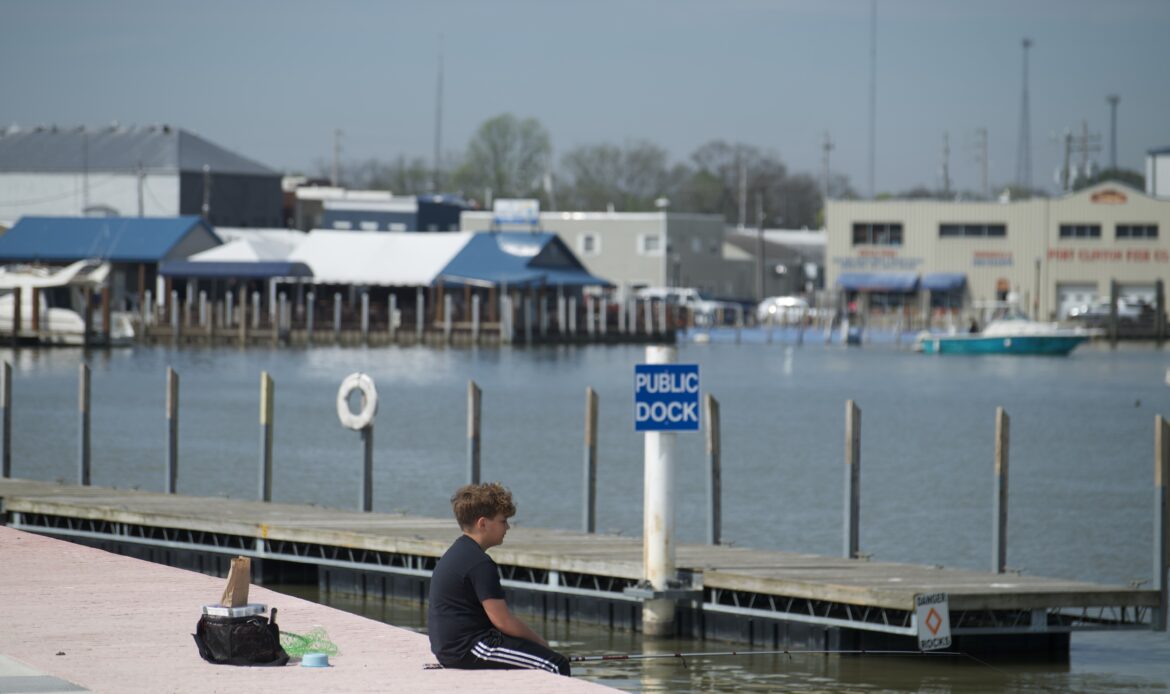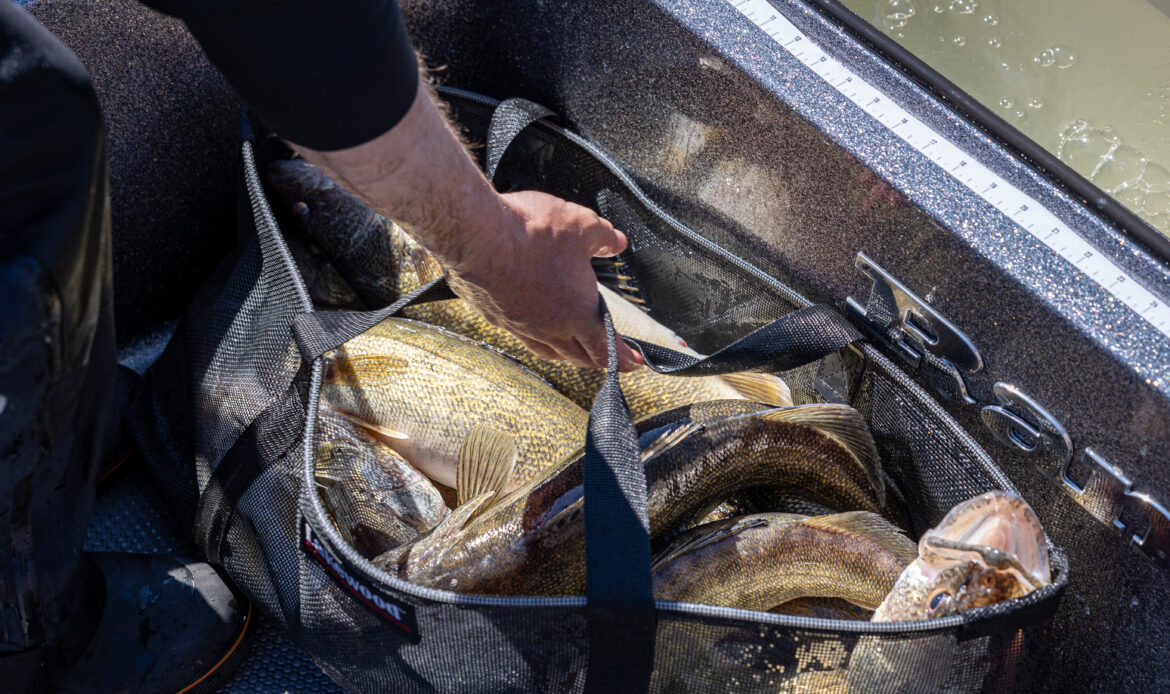What you need to know about the Lake Erie spring walleye spawn.
“We have our spring spawning run starting right now. A majority of the walleye population spawns out on the main lake on reefs and shoals out in open water, but we have strong runs in the Maumee, Detroit, and Sandusky rivers. Almost anyone could drive up with a pair of waders, a spinning rod, a jig head or twister tail, walk out and have a legitimate chance of limiting out in an afternoon fishing in one of our shallow Ohio rivers.” – Travis Hartman, Fisheries Biologist at Ohio DNR Division of Wildlife
March 19, 2023: The day before I catch Zach Amidon (PhD Fisheries Biology/Ecology at the University Of Toledo) for a quick call to pick his academic-angler brain around Lake Erie spring spawn walleye madness, he’s found himself at the local bait and tackle, searching for a parking spot and a brand new pair of neoprene waders. Zach says, “The place was absolutely jam-packed. The lot was filled with out-of-state plates. It’s insane how busy the place was.”

Each spring, the famous (or perhaps, infamous) Lake Erie annual walleye spawn draws tens of thousands of anglers from all over the United States. For decades, during peak run, anglers flood the Maumee River’s main spawning area stretching from Orleans Park in Perrysburg, Ohio, to Side Cut Metropark in the city of Maumee in search of their daily bag limit (6) of walleye over 15 inches. Amidon elaborates on the craze, “This time of year, farmers will rent out entire fields for camping. People bring their RVs, park up near the river, and fish. The first people I spoke with at the tackle shop had just driven in from Brooklyn, just two guys sleeping in a big travel van with all their fishing gear. They planned on staying for a week just to fish the run.”
A Great Lake Tailored
“First and foremost, we’re fortunate to have a Great Lake tailored to the natural production of walleye with the forage base to support an adult population. If you could design a system tailored to the natural production of walleye and support a trophy walleye fishery, you would design Lake Erie.” – Travis Hartman, Fisheries Biologist at Ohio DNR Division of Wildlife
Such an angler and fish frenzy can be attributed to the environment in Lake Erie’s western basin and its three major tributaries: the Maumee, Sandusky, and Detroit Rivers—all of which are ideally suited for the natural reproduction of walleye that grow at nearly double the rate of other Great Lakes. The combination of well-aerated warm water; shallow, rocky, cobbly river substrate (ideal for spawning); and a massively productive bottom-to-top food chain (including lots of zooplankton to feed young walleyes) creates near-perfect spawning habitat and all the essential ingredients for larval fish to survive into their juvenile phases. Plenty of places allow walleye to spawn, but few (if any) others have enough nutrients and micro-organisms to feed huge hatches of larval fish through their first year of life.

Amidon will tell you that he’s not officially “an expert on walleye” (his studies focus primarily on Lake Erie whitefish populations), but few folks are better qualified to comment on Great Lakes fish life cycles. “Annual fish recruitment (fish surviving past one year) for any species balances on a knife’s edge. When you think about it, so many things can go wrong in the early life of a fish. When fisheries managers and scientists refer to ‘portfolio theory,’ it means that fish are literally putting their eggs in more than one basket, which is one of the main reasons Lake Erie is so productive regarding walleye.”
In addition to river systems, Lake Erie’s Western Basin boasts a complex of shallow underwater islands and reefs, that offer diverse spawning areas and more chances to hit the fish reproduction jackpot. Furthermore, the Environmental Protection Agency has recently built two new artificial reefs for spawning fish in the Detroit River, targeting several species, including walleye, showing that humans continue to play an active role in tailoring the world-renowned fishery.
Amidon states, “We’ve essentially manufactured a fishery. To some extent, nothing in this world is natural anymore. Influences that we can’t necessarily predict come together and create the world. If you go back 100 years, people weren’t really talking about walleye. Back then, they were talking about the diversity of fish in Lake Erie and many of those fish are now essentially gone, for instance, the once thriving blue pike.” Amidon explains how, over time, due to “fishing – up” specific populations of fish; for example, cisco and whitefish, humans have essentially eliminated certain species and are now left with a select few species that we’ve decided to conserve partially because of pressure from fishermen and other government agencies.
Check back in for Part 2 in this series to learn exactly what a walleye “hatch” is. Then join Zach Amidon on the Maumee River for a spring pilgrimage of sorts—fast, furious fishing amid a uniquely American cultural immersion.



